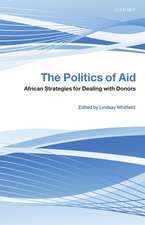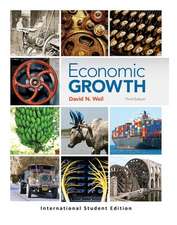Listening to Africa: Developing Africa from the Grassroots
Autor Pierre Pradervanden Limba Engleză Paperback – 10 dec 1990 – vârsta până la 17 ani
| Toate formatele și edițiile | Preț | Express |
|---|---|---|
| Paperback (1) | 172.74 lei 6-8 săpt. | |
| Bloomsbury Publishing – 10 dec 1990 | 172.74 lei 6-8 săpt. | |
| Hardback (1) | 438.07 lei 6-8 săpt. | |
| Praeger – 30 noi 1989 | 438.07 lei 6-8 săpt. |
Preț: 172.74 lei
Preț vechi: 258.16 lei
-33% Nou
Puncte Express: 259
Preț estimativ în valută:
33.05€ • 34.51$ • 27.29£
33.05€ • 34.51$ • 27.29£
Carte tipărită la comandă
Livrare economică 15-29 aprilie
Preluare comenzi: 021 569.72.76
Specificații
ISBN-13: 9780275936921
ISBN-10: 0275936929
Pagini: 250
Dimensiuni: 156 x 235 x 14 mm
Greutate: 0.36 kg
Editura: Bloomsbury Publishing
Colecția Praeger
Locul publicării:New York, United States
ISBN-10: 0275936929
Pagini: 250
Dimensiuni: 156 x 235 x 14 mm
Greutate: 0.36 kg
Editura: Bloomsbury Publishing
Colecția Praeger
Locul publicării:New York, United States
Notă biografică
PIERRE PRADERVAND has been active in the field of development for a quarter century as a researcher, program administrator, publisher and co-editor of Famille et Development, and African grass roots development magazine. He is presently working in the field of global education in his home country, Switzerland.
Cuprins
IntroductionUnique ChallengesThe pathfinders"We are the ones who have turned this country into a dessert"Facing the challenges: Economic, agricultural, and structuralThe New Africa on the MovePeasant power: Village groups in the makingFrom Aid to partnershipA new future in the makingM'bathakins" (Let's pull together)Creating opportunity--or when ants carry elephantsSon and daughter millsThe African farmer as inventor"Nothing is impossible" or the end of hunger by the year 2000Achilles' heelTowards another developmentPost scriptum: Learning from AfricaAppendixBibliographyIndex
Descriere
Descriere de la o altă ediție sau format:
For the past 15 years, Africa has seen remarkable change. New energies, new experiences, a burst of creativity, a courage defying explanation are being manifested by millions of people. Especially in the villages, a silent revolution is underway that is changing the continent's developmental landscape. In tropical Africa, literally millions of farmers have moved to take the future into their own hands and to reclaim the self-reliance that was theirs until the disruption of colonial occupation and the post-independence era of rapid modernization. As a result of the tens of thousands of small village projects that they have initiated, these farmers are improving their living conditions.
Because most people outside of Africa know little of these changes, Pradervand has written of a grassroots revolution which could be the greatest sign of hope for Africa today. This unique study, the outgrowth of his four and one-half month, 14,000 kilometer trip through 111 villages in Senegal, Mali, Burkina, Faso, Zimbabwe, and Kenya topples many stereotypes and offers a hopeful view of African development. It describes the numerous self-help projects initiated by peasant farmers including the creating of original savings schemes, the invention of new food storage systems, the distribution of family planning information, the setting up of barter exchanges, the organization of centers for traditional medicine, and the building of indigenous farmers' organizations. The book also lays great emphasis on the cultural dimensions of development and how peasant-farmers are stressing the need to return to their own cultural roots.
For the past 15 years, Africa has seen remarkable change. New energies, new experiences, a burst of creativity, a courage defying explanation are being manifested by millions of people. Especially in the villages, a silent revolution is underway that is changing the continent's developmental landscape. In tropical Africa, literally millions of farmers have moved to take the future into their own hands and to reclaim the self-reliance that was theirs until the disruption of colonial occupation and the post-independence era of rapid modernization. As a result of the tens of thousands of small village projects that they have initiated, these farmers are improving their living conditions.
Because most people outside of Africa know little of these changes, Pradervand has written of a grassroots revolution which could be the greatest sign of hope for Africa today. This unique study, the outgrowth of his four and one-half month, 14,000 kilometer trip through 111 villages in Senegal, Mali, Burkina, Faso, Zimbabwe, and Kenya topples many stereotypes and offers a hopeful view of African development. It describes the numerous self-help projects initiated by peasant farmers including the creating of original savings schemes, the invention of new food storage systems, the distribution of family planning information, the setting up of barter exchanges, the organization of centers for traditional medicine, and the building of indigenous farmers' organizations. The book also lays great emphasis on the cultural dimensions of development and how peasant-farmers are stressing the need to return to their own cultural roots.












